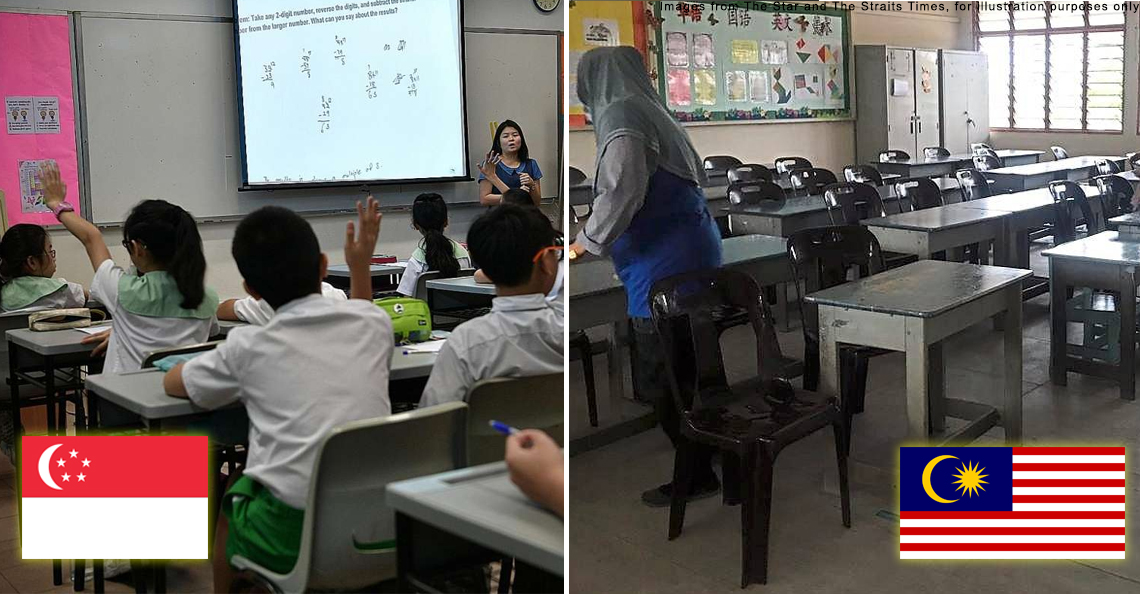Kena ‘Casual Contact’ warning on MySejahtera? Here’s what it actually means
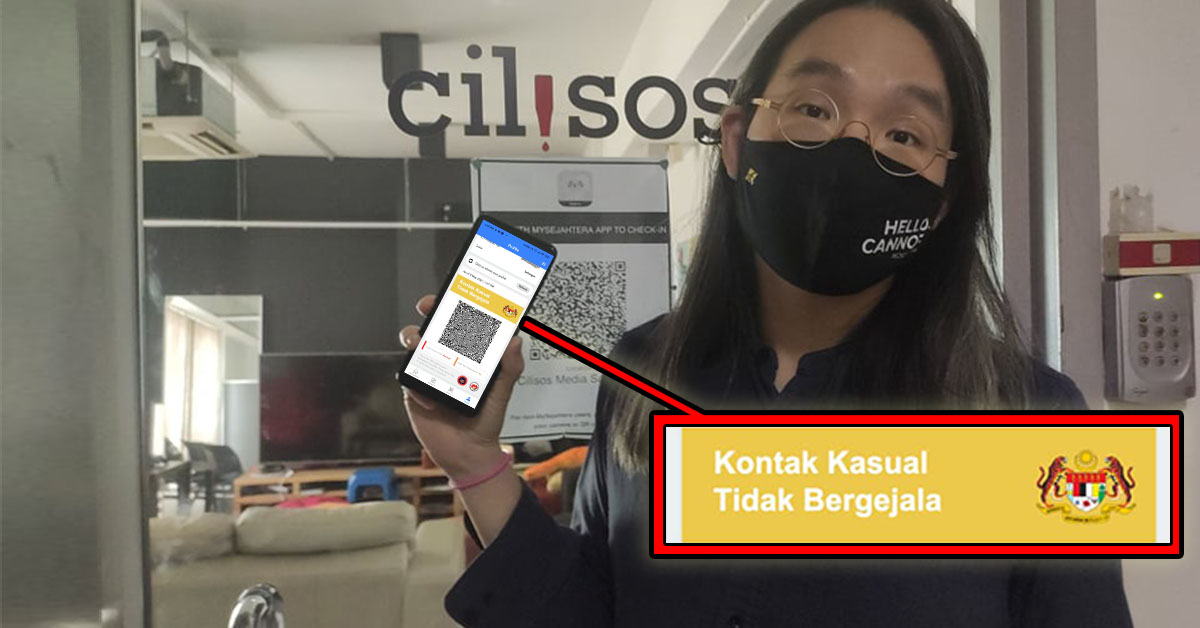
- 1.2KShares
- Facebook980
- Twitter12
- LinkedIn24
- Email24
- WhatsApp116
Sometime last week, three people from CILISOS went out to perform their usual routine (separately la, ofcos). And just like everybody else, they used their MySejahtera to register themselves to places they went to.
However, when they got back home, they noticed something strange with their MySejahtera app…
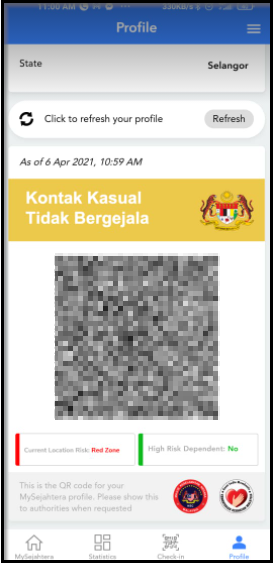
As it turns out, they were categorised as people with Casual Contact. Wait, how did that even happen? And where on earth did they kena???
Unfortunately, you WON’T know where you get this contact from
One of the first few things that raised the CILI peeps’ concern was where on earth did they get this contact from? That’s because the MySejahtera app will only tell you that you’re a casual contact without informing you where you got it from.
And so the guessing game begins with some of them suspected that they got it based on the last location they’ve been to (aka the office 😰) although they all kena separately. While others weren’t able to rest well as they wondered about this. 🙁
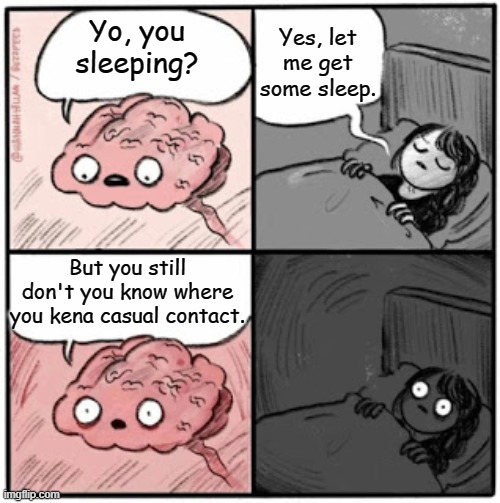
So, we did a lil digging to get a peace of mind find out why this happens. According to the Ministry of Health’s (MOH) tweet, there are two reasons as to why the MySejahtera wouldn’t tell you where you get this contact from which are…
- To protect the patient’s confidentiality.
- To avoid stigmatisation.
Now, you may be wondering – what kinda stigmatisation is the MOH talking about? Wouldn’t it be better if people know which place to avoid??
Just in case you missed it, former Covid-19 patients and business premises have reported facing several stigmatisation such as being refused services like from hairdressers. Health Director-General, Dr Noor Hisham even mentioned that some people would avoid going to areas that are identified with Covid-19 cases.
“But the point we want to avoid is the stigmatisation. Once you know the place has a case, you would not want to go to that school, condo or mall because of the fear.” – Noor Hisham, as quoted by Malay Mail.
Okay, now that we know that, we can move on to another important question – how is casual contact any different from close contact and why…
5 days later, one of them became symptomatic?!?!?! 😲
Initially, when the CILISOS staffs were notified that they became casual contacts, they were also given a brief explanation on what a casual contact is on MySejahtera that looks like this.
We’ve gotten in touch with MOH to find out more about casual contact and how is it any different from close contact. But we were only given a link to MOH’s Facebook video on that. You can watch it here.
Well, the gist of it is that you just so happen to be at the wrong place and at the wrong time.
“A Casual Contact is an individual who has been identified to be in contact with a Covid-19 Positive case at a particular place and time based on MySejahtera Check-Ins unknowingly by the individual.” – an excerpt from MOH tweet.
General practitioner Dr Sashini Seeni specifically added that you are also considered a casual contact if you’re within two meters of someone with Covid-19 for less than 15 minutes.
Usually, people with casual contact would be notified by MySejahtera for having ‘Low Risk – casual contact with no symptoms’. However, one of the CILI peeps’ status on MySejahtera changed 5 days later to this…
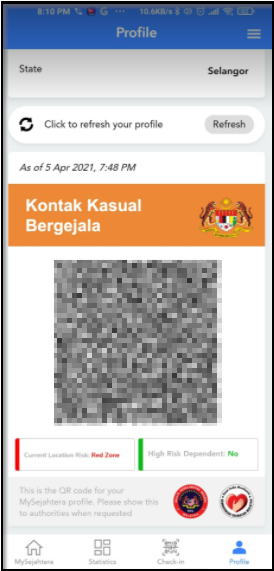
And this happened because of a daily survey called the daily self-assessment form that she (and everyone who’s a casual contact) has to fill in every single day for 14 days on MySejahtera. In the survey, you’ll be asked if you show any symptoms like fever, difficulty in breathing or if you’ve gotten in contact with anyone with Covid-19. You can click here and here to see what the survey looks like.
This CILISOS staff had diarrhea (because of her allergy) and because of this, her status on MySejahtera ended up changing to ‘Low Risk – casual contact with symptoms’. However, this can also happen if you accidentally fill in the survey wrongly by, for instance, accidentally ticking on symptoms which you don’t have.
Thankfully, her status was then reverted back to ‘Low Risk – casual contact with no symptoms’ as we were writing this story. MOH explained that once you fill in your symptoms correctly the next day or, in this CILISOS staff’s case, recover from her symptoms, everything will be reverted back to normal.
And if you noticed, people with casual contact are still considered low risk as opposed to people with close contact who are considered high risk. This may be why…
They can still go out to work as usual!
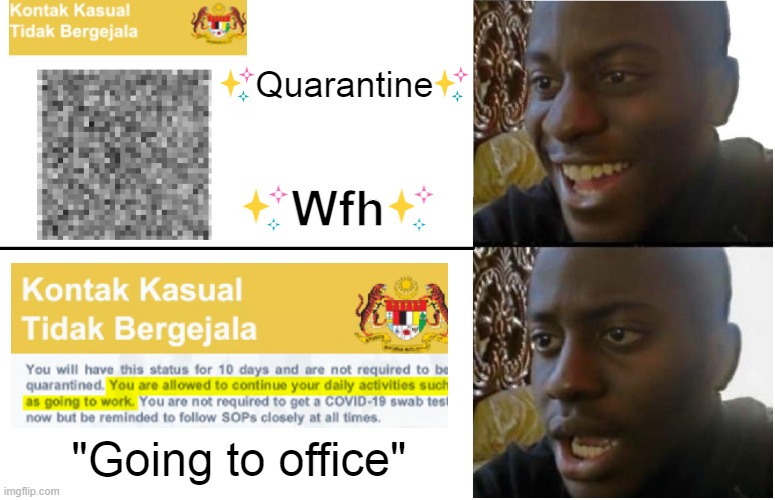
Unlike being a close contact to people with Covid-19, people who are categorised as casual contact have an option to either isolate themselves (read: quarantine) or go out to work. However, MOH emphasises that they practice super strict SOPs when they go out, especially in public areas.
The affected CILISOS staffs, for instance, are all working from home (and so do the rest of us hehe) and avoiding going to the office at the moment.
Aside from that, people who are casual contacts are also advised to monitor themselves and go to the nearest clinic should they experience any Covid-19 symptoms.
So, if you happen to open up MySejahtera and found out that you’re a casual contact some time in the future (we really hope you don’t, though!), don’t panic. Just make sure you wear a mask when you go out, practice social distancing besides other SOPs and don’t forget to fill in the daily self-assessment form.
- 1.2KShares
- Facebook980
- Twitter12
- LinkedIn24
- Email24
- WhatsApp116


